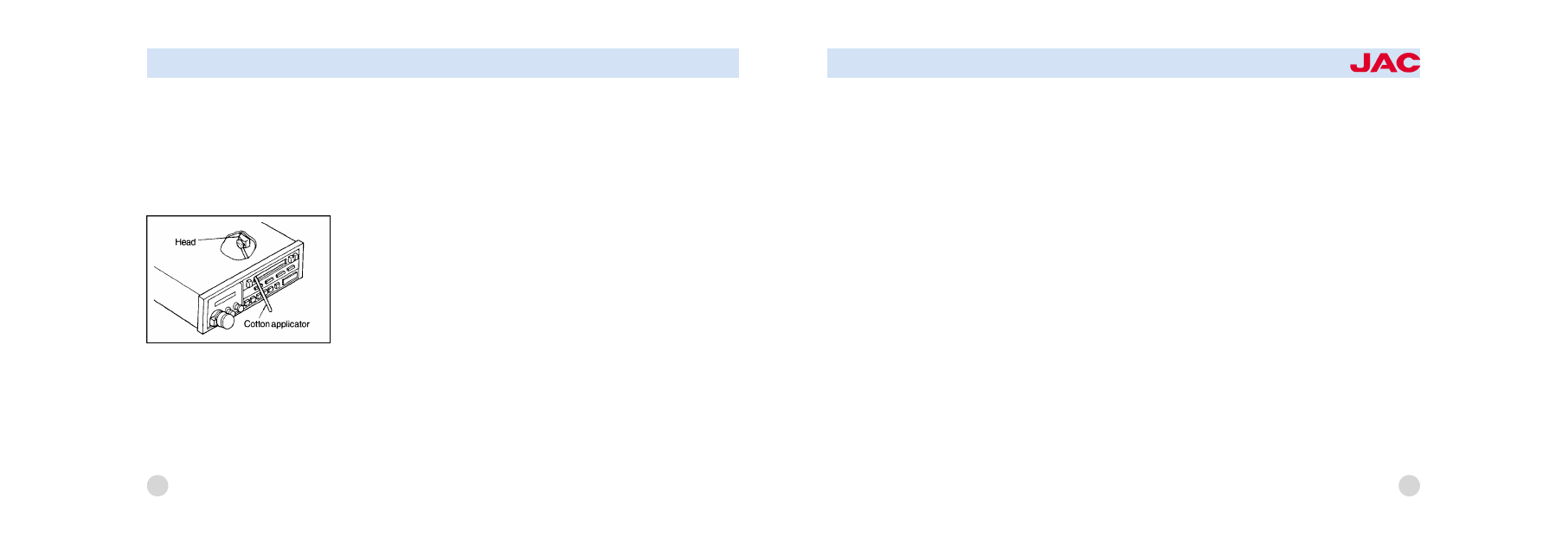JAC Trucks. Manual - part 136

荫 We strongly recommend against
the use of tapes longer than C-60
(60 minutes total).Tapes such as
C-120 or C-180 are very thin and
do not perform as well in the auto鄄
motive environment.
荫 Be sure that the cassette label
is not loose or peeling off or tape
ejection may be difficult.
荫 Never touch or soil the actual
audio tape surfaces.
荫 Keep all magnetized objects,
such as electric motors, speakers
or transformers away from your
cassette tapes and tape player u鄄
nit.
荫 Store cassettes in a cool, dry
place with the open side facing
down to prevent dust from setting
in the cassette body.
荫 Avoid repeated fast reverse us鄄
age to replay one given tune or
tape section. This can cause poor
tape winding to occur, and even鄄
tually cause excessive internal
drag and poor audio quality in the
cassette. If this occurs, it can
sometimes be corrected by fast
winding the tape from end to end
several times. If this does net cor鄄
rect the problem, do not continue
to use the tape in your vehicle.
荫 The playback head, capstan
and pinch rollers will develop a
coating of tape residue that can re鄄
sult in deterioration of sound quali鄄
ty, such as a wavering sound.
They should be cleaned monthly
using
acommercially
available
head cleaning tape or special so鄄
lution available from audio special鄄
ty shops. Follow the supplier's di鄄
rections carefully and never oil any
part of the tape player unit.
荫 Always be sure that the tape is
tightly wound on its reel before in鄄
serting in the player. Rotate a pen鄄
cil in the drive sprockets to wind
up any slack.
46
INSTRUMENTS & CONTROLS
STARTING & OPERATING
47